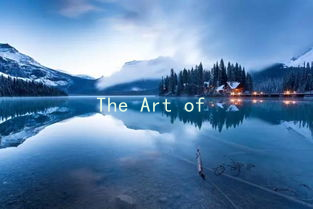The Art of Emotional Connection: Bridging the Gap in Love and Desire
In the landscape of modern relationships, emotional connection plays a pivotal role in fostering love and desire. While attraction often begins with physical affinity, it is the deeper, intangible bond that truly sustains a relationship over time. Understanding how to bridge the emotional gap can enhance communication, strengthen intimacy, and ultimately cultivate lasting partnerships. Here are some essential techniques to master the art of emotional connection.
1. Active Listening: The Foundation of Understanding
One of the most powerful tools in building an emotional connection is active listening. This involves more than just hearing words; it requires full engagement. Show your partner that you are present by maintaining eye contact, nodding, and providing affirmative responses. Reflecting back what you’ve heard can also help clarify feelings and emotions. For instance, saying, “It sounds like you felt overwhelmed at work today,” validates their experience and encourages deeper conversation.
2. Vulnerability: The Catalyst for Intimacy
Opening up about your feelings and experiences can be daunting, yet it is an essential step toward deeper connection. Sharing your fears, dreams, and insecurities allows your partner to see your authentic self. This vulnerability invites them to reciprocate, creating a safe space for both partners to express their emotions. For example, you might say, “I’ve been feeling anxious about our future, and I’d love to hear your thoughts.” Such honesty can strengthen trust and intimacy.
3. Non-Verbal Communication: The Unspoken Language of Love
Much of our emotional expression comes from non-verbal cues. Pay attention to body language, facial expressions, and tone of voice when communicating with your partner. A gentle touch, a warm smile, or a soft tone can convey love and support without a single word. Being aware of your own non-verbal signals is equally important; make sure your body language aligns with your words, showing that you genuinely care.
4. Shared Experiences: The Bonding Moments

Creating shared experiences is crucial in cultivating emotional connections. These moments foster camaraderie and demonstrate a commitment to one another. Whether it’s taking a cooking class together, hiking, or simply enjoying a quiet evening at home, doing things as a couple can solidify the bond. Make it a point to prioritize spending quality time together, and find activities that resonate with both of you.
5. Appreciation and Affirmation: The Heart of Connection
Expressing gratitude and appreciation for your partner can greatly enhance emotional intimacy. Recognizing their efforts, both big and small, reinforces a sense of value in the relationship. Simple affirmations like, “I really appreciate how you always listen to me,” or “Thank you for making dinner tonight, it means a lot,” can go a long way. Regularly affirming each other’s contributions cultivates an environment of love and support.
6. Emotional Check-Ins: Staying Aligned
Regular emotional check-ins can help maintain a strong connection. Set aside time to discuss feelings, needs, and any issues that may arise. This practice not only ensures both partners are on the same page but also reinforces a culture of open communication. An example of a check-in could be, “How are you feeling about us lately? Is there anything we can work on together?” This kind of dialogue keeps the emotional landscape clear and builds resilience in the relationship.
7. Conflict Resolution: Turning Challenges into Growth
Conflicts are an inevitable part of any relationship, but how they are handled can either fracture or fortify the emotional connection. Approach disagreements with empathy and understanding. Instead of assigning blame, focus on resolving the issue collaboratively. Phrases like, “I understand you’re upset, and I’m here to listen,” can help de-escalate tension. Use conflicts as opportunities to grow closer by reinforcing commitment and understanding.
In conclusion, the art of emotional connection is essential in bridging the gap in love and desire. By employing techniques such as active listening, vulnerability, non-verbal communication, shared experiences, appreciation, emotional check-ins, and effective conflict resolution, couples can foster a deeper, more meaningful relationship. Remember that love is a journey, and cultivating an emotional bond enriches that journey, allowing both partners to flourish together.





